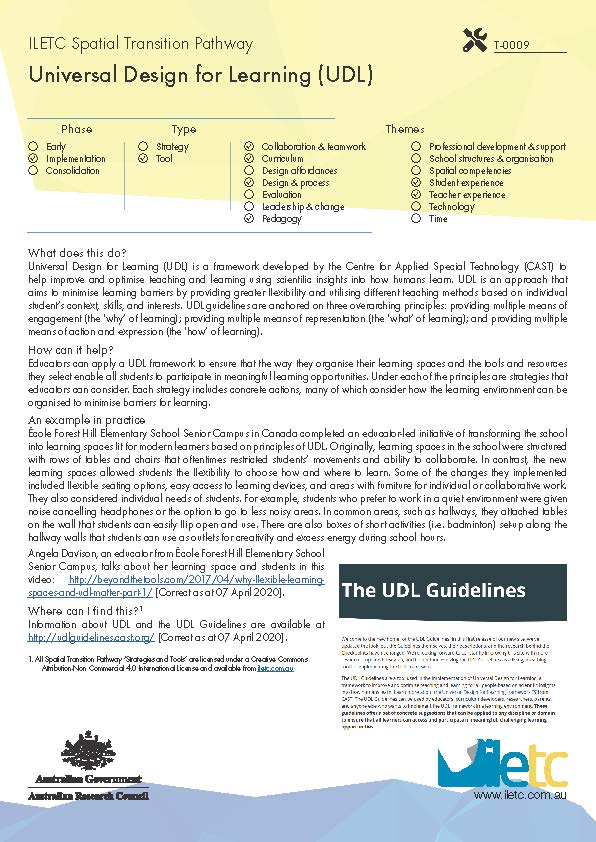| Introduction | Wayfinding activity | Spatial typologies | Spatial transition case studies | Spatial transition resources |
Spatial Transition Pathway
The Spatial Transition Pathway provides a framework for the strategies and tools which support teachers to make the journey of change into innovative learning environments. Strategy is defined as an explicit concept, theory or practice that enhances teachers’ use of innovative learning environments. A tool is an identifiable activity or protocol, that implements a strategy. You can use the database to search for strategies and tools by temporal phase or transition theme(s). If you would like to contribute a strategy or tool, please contact the ILETC team.
Universal Design for Learning (UDL)
Universal Design for Learning (UDL) is a framework developed by the Centre for Applied Special Technology (CAST) to help improve and optimise teaching and learning using scientific insights into how humans learn. UDL is an approach that aims to minimise learning barriers by providing greater flexibility and utilising different teaching methods based on individual student’s context, skills, and interests. UDL guidelines are anchored on three overarching principles: providing multiple means of engagement (the ‘why’ of learning); providing multiple means of representation (the ‘what’ of learning); and providing multiple means of action and expression (the ‘how’ of learning).

